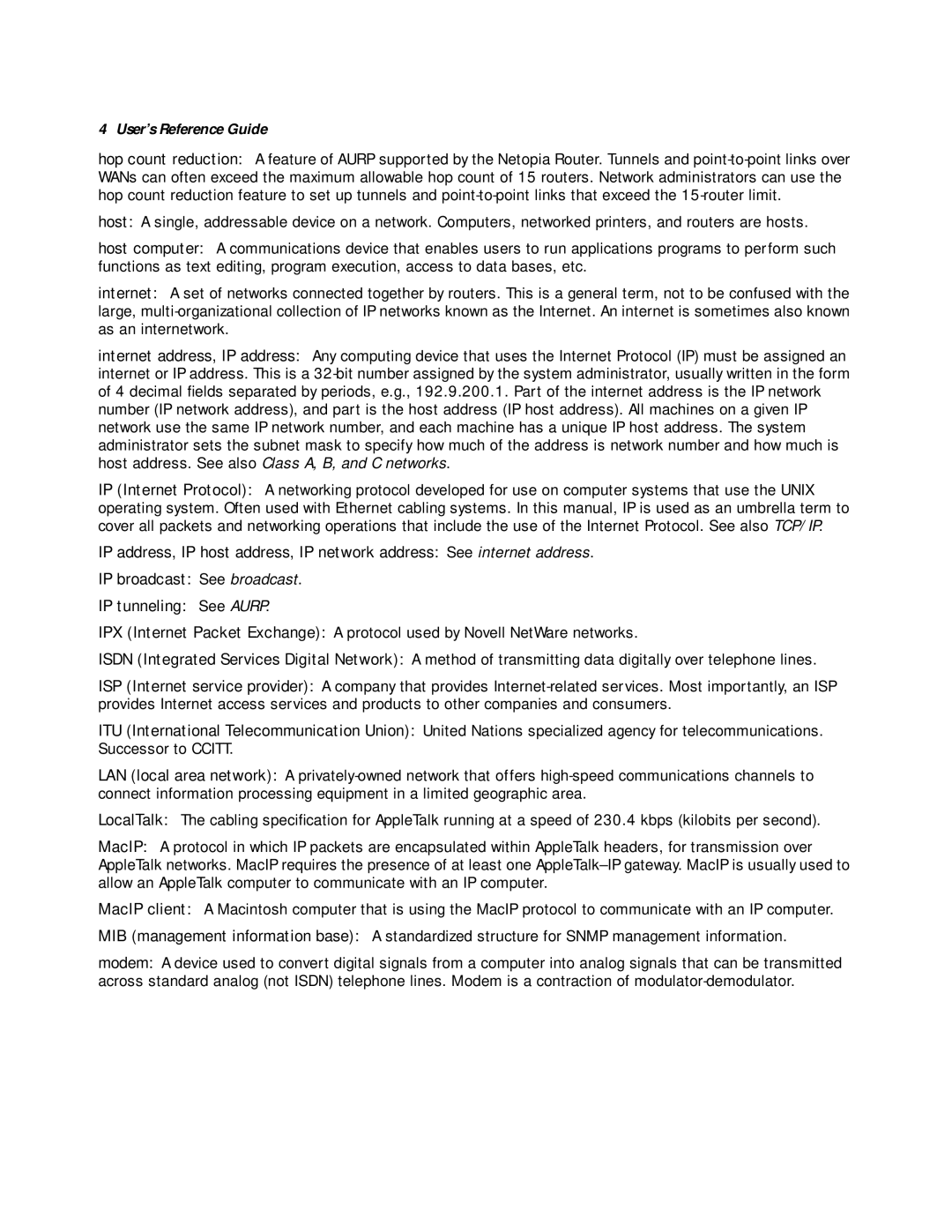4 User’s Reference Guide
hop count reduction: A feature of AURP supported by the Netopia Router. Tunnels and
host: A single, addressable device on a network. Computers, networked printers, and routers are hosts.
host computer: A communications device that enables users to run applications programs to perform such functions as text editing, program execution, access to data bases, etc.
internet: A set of networks connected together by routers. This is a general term, not to be confused with the large,
internet address, IP address: Any computing device that uses the Internet Protocol (IP) must be assigned an internet or IP address. This is a
IP (Internet Protocol): A networking protocol developed for use on computer systems that use the UNIX operating system. Often used with Ethernet cabling systems. In this manual, IP is used as an umbrella term to cover all packets and networking operations that include the use of the Internet Protocol. See also TCP/IP.
IP address, IP host address, IP network address: See internet address.
IP broadcast: See broadcast.
IP tunneling: See AURP.
IPX (Internet Packet Exchange): A protocol used by Novell NetWare networks.
ISDN (Integrated Services Digital Network): A method of transmitting data digitally over telephone lines.
ISP (Internet service provider): A company that provides
ITU (International Telecommunication Union): United Nations specialized agency for telecommunications. Successor to CCITT.
LAN (local area network): A
LocalTalk: The cabling specification for AppleTalk running at a speed of 230.4 kbps (kilobits per second).
MacIP: A protocol in which IP packets are encapsulated within AppleTalk headers, for transmission over AppleTalk networks. MacIP requires the presence of at least one
MacIP client: A Macintosh computer that is using the MacIP protocol to communicate with an IP computer.
MIB (management information base): A standardized structure for SNMP management information.
modem: A device used to convert digital signals from a computer into analog signals that can be transmitted across standard analog (not ISDN) telephone lines. Modem is a contraction of
